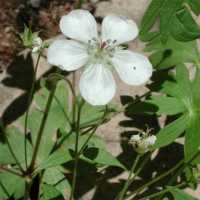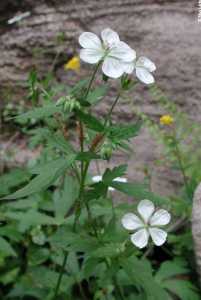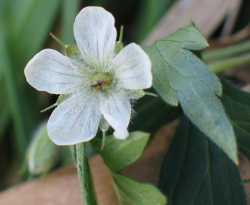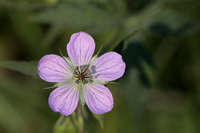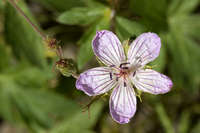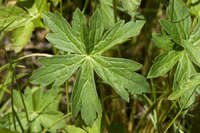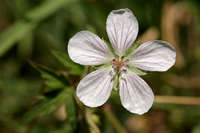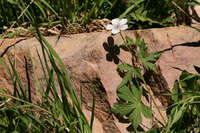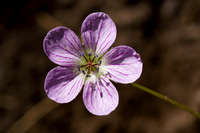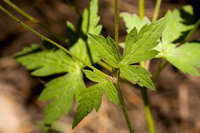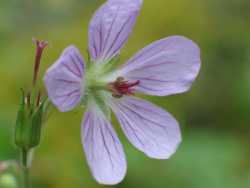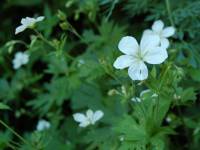Duration: Perennial
Nativity: Native
Lifeform: Forb/Herb
General: Herbaceous or small shrubs with forked stems and swollen nodes, erect, not profusely branching, 40-80 cm long.
Leaves: Palmately lobed, opposite or basal with stipules, glabrous to sparsely hairy, primary divisions incised, toothed to lobed.
Flowers: Perfect, light pink to purple, regular, in cymose or umbel-like clusters, sepals persistent 9-12 mm long, pubescent, stamens 10, all fertile, 5 of them longer than the others, style persistent, the stigma branches 3-4 mm long, forming the tip of the beak when mature.
Fruits: Style persistent, becoming recoiled when fruiting.
Ecology: Found in coniferous forests from 6,500-11,500 ft (1981-3505 m); flowering April-October.
Notes: The keys to this species are the whitish petals and the stigma branches 3-4 mm long. The petals can sometimes be pale pink, rather than the deep purple as found in G. caespitosum, or the white in G. wislizenii.
Ethnobotany: The pulverized leaves were used as snuff to stop nosebleeds, and the powered roots were also ingested to treat nosebleed. The plant was used as a life medicine.
Synonyms: None
Editor: LCrumbacher, 2011
Etymology: Geranium comes from from the Greek geranos, "crane," from the beak-like fruit, while richardsonii is named for Sir John Richardson (1787-1865), a Scottish naturalist, meteorologist, doctor, cartographer and Arctic explorer.



